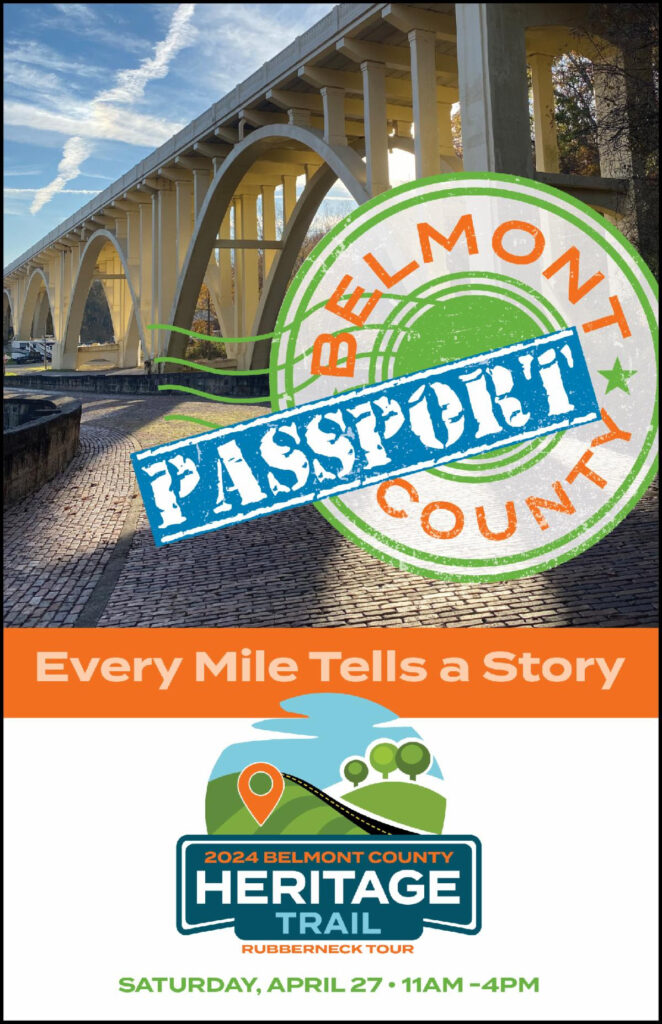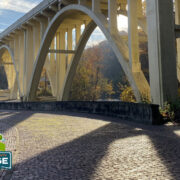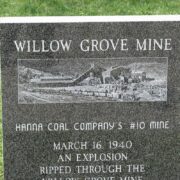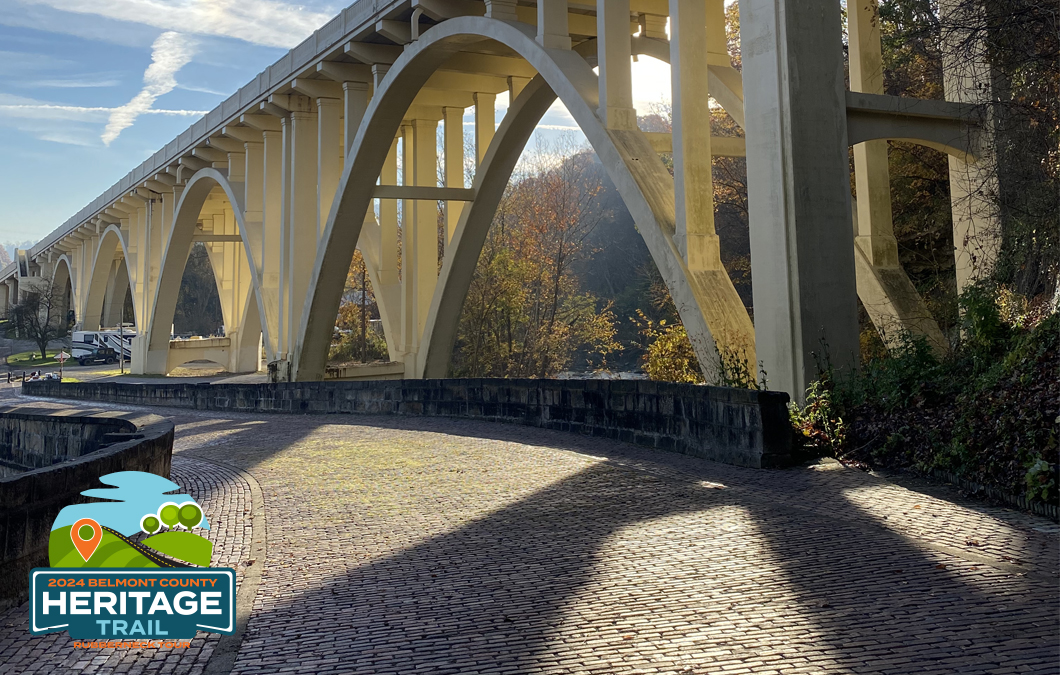
Every Mile Tells a Story Along The Belmont County Heritage Trail / Rubberneck Tour
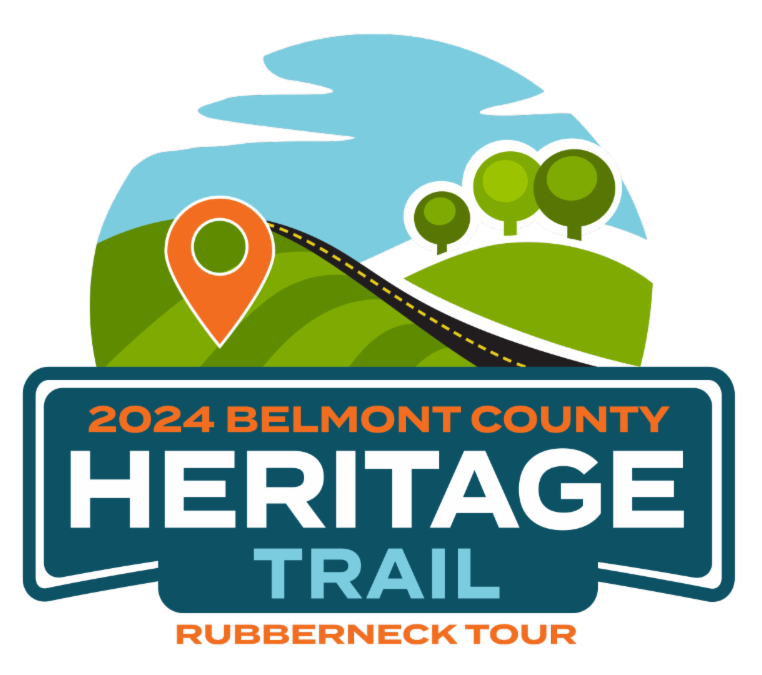
On Saturday, April 27th from 11 am – 4 pm, spend the day enjoying stunning views, historical sites, and Belmont County heritage while driving along our scenic byways.
This family-friendly event is free to the community and stops along the route will include activities, demonstrations, food trucks, and more.
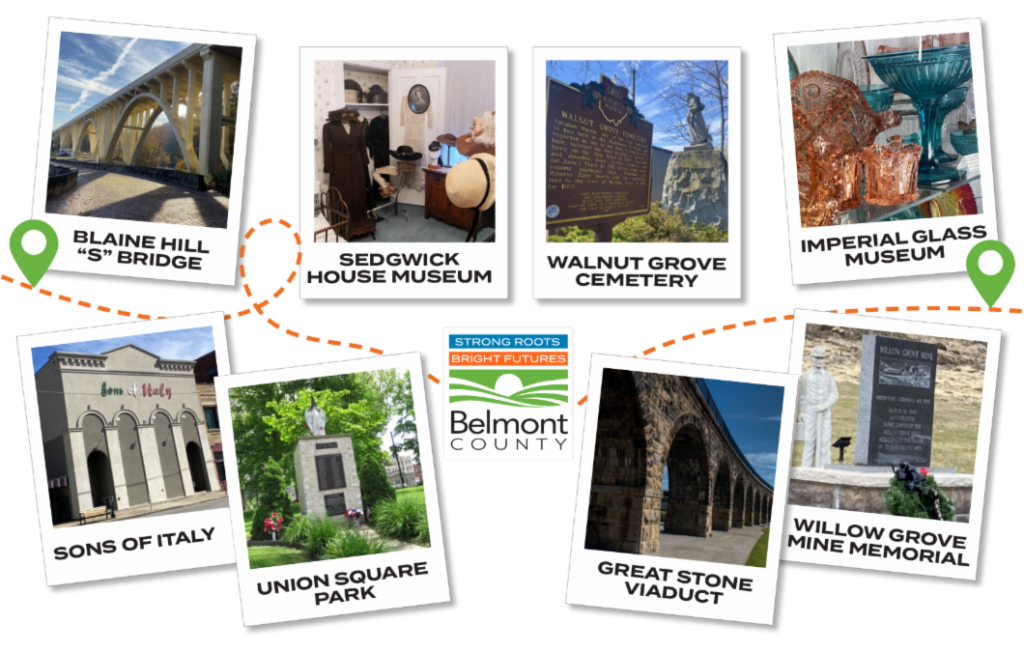
Every mile tells a story.
This self-guided driving tour will feature points of interest through the Blaine, Martins Ferry, and Bellaire areas. Tour stops can be visited in any order. Along the route, you will discover the heritage that built Belmont County through the importance of transportation, agriculture, and industry.
With its beginnings as a tour of local farms and homesteads in 1971 to promote agriculture, now 50 years later it has expanded to include more unique stops and reach different parts of the county each year.
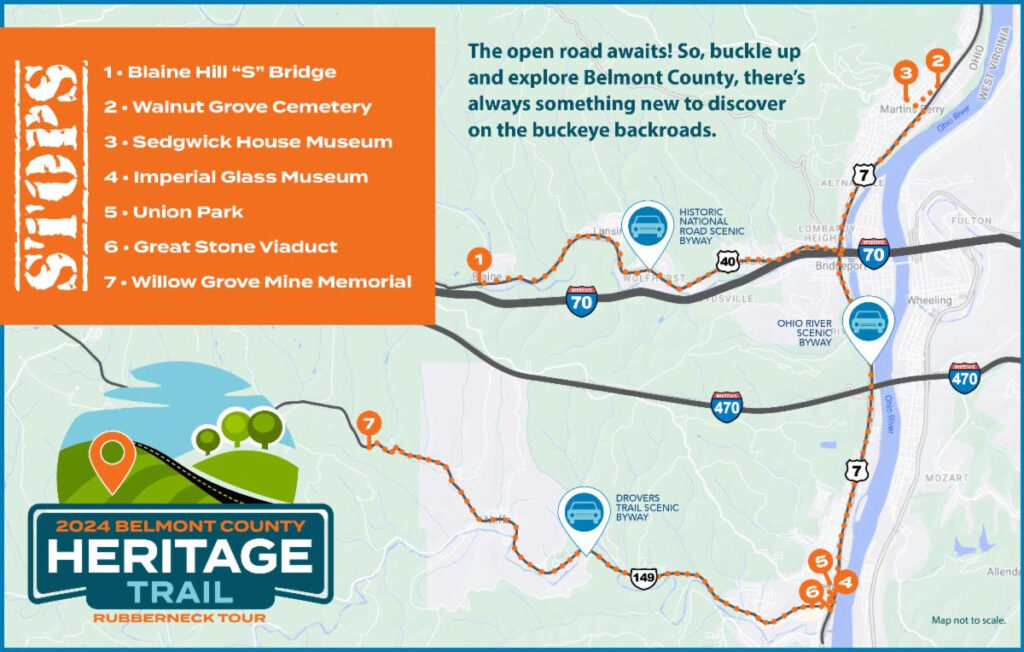
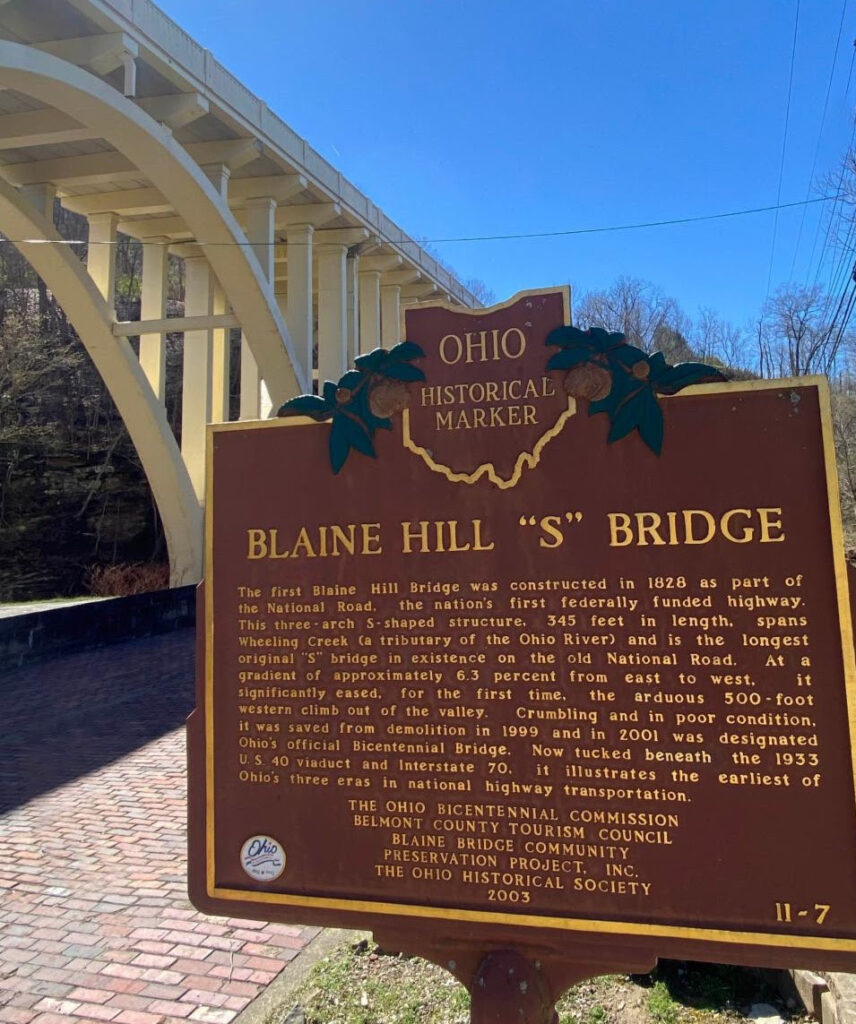
STOP 1 – BLAINE HILL “S” BRIDGE
Visit Ohio’s official Bicentennial Bridge. Built in 1828, it is Ohio’s oldest bridge and remains the longest “S” bridge of the entire six state Historic National Road. It offers a tiered view of three generations of American transportation history: Interstate 70, Route 40, and the Historic National Road.
Also featured at this stop:
- Learn more from the Ohio National Road Association about our scenic byways
- Play old-fashioned games featuring the Schoolmarm from the Great Western Schoolhouse
- Rusty Bull Taco food truck
STOP 2 – WALNUT GROVE CEMETERY
Dating back to the 1790s, this cemetery is Martins Ferry’s oldest pioneer landmark. The Walnut Grove Cemetery is the burial place for members of the Zane and Martin families. The Betty Zane Statue at the entrance is a reminder of the heroine and the last battle of Fort Henry where she helped settlers resist an attack by the British and their Native American allies in 1782.
Inside the cemetery, see a Napoleon Artillery Cannon made in 1864 and used by the Confederate Army in the Civil War.
Also featured at this stop:
- Experience living history narrated by historical interpreters
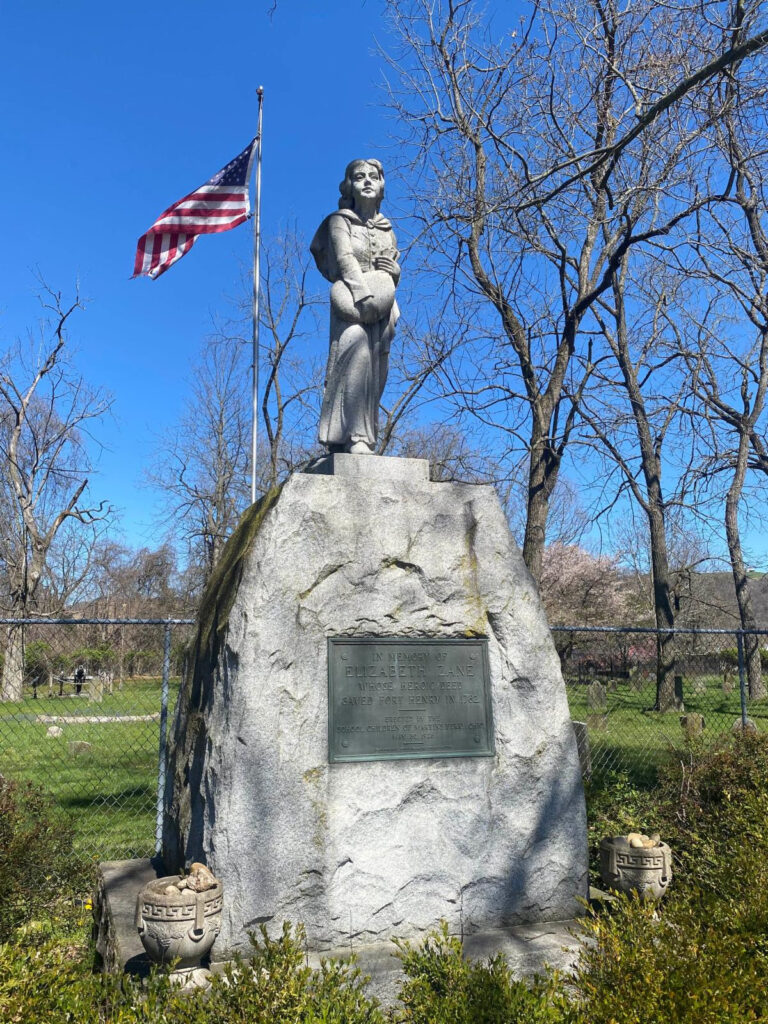
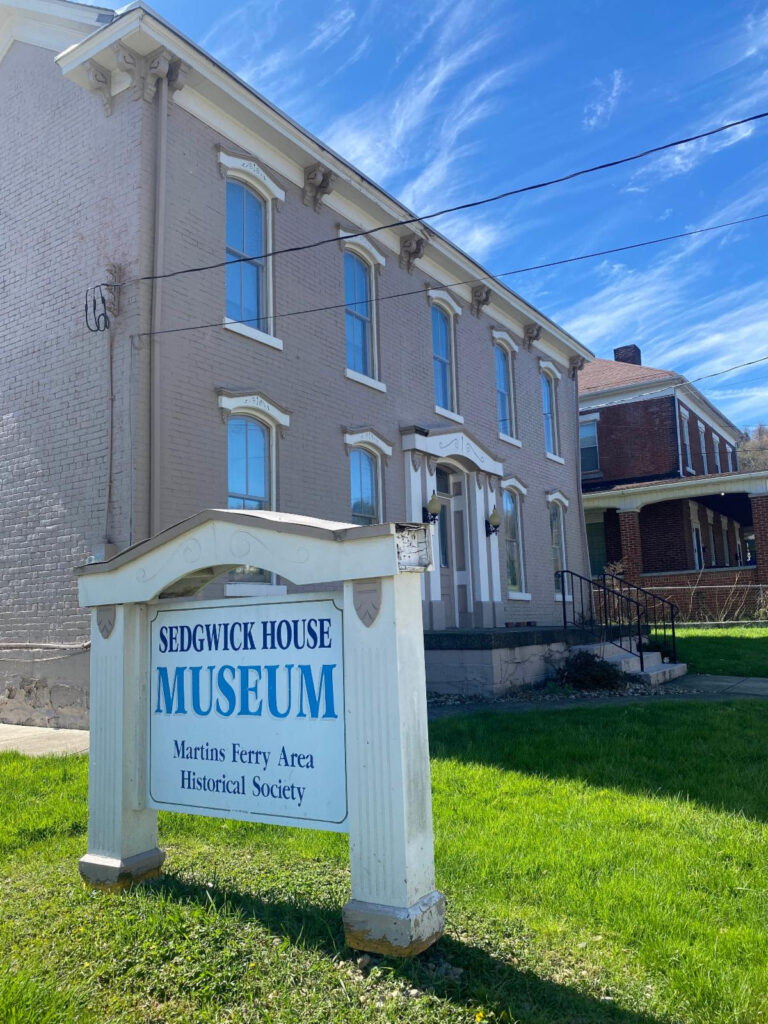
STOP 3 – SEDGWICK HOUSE MUSEUM
Take a step back in time and relive the rich history of Martins Ferry inside the Sedgwick House Museum. It was built in the 1870s and established as the Sedgwick House Museum in 1970 by the Martins Ferry Area Historical Society. The collection includes antique furniture, quilts, and clothing, that belonged to the Zane and Martin families, memorabilia from Martins Ferry schools, and artifacts from business and industries that impacted the region.
Also featured at this stop:
- Tour the museum
- Enjoy activities with the Belmont County District Library
- The Turn Around Quick Bites Food Truck & The Jakery
STOP 4 – IMPERIAL GLASS MUSEUM
The National Imperial Glass Museum has preserved the legacy of the Imperial Glass Company, one of the largest handcrafted glass companies in America. Tour the museum and admire the collection of over 3,000 glass pieces created from 1904 to 1984, including Candlewick, Cape Cod, carnival, milk glass, and many more. Imperial Glass Museum is home to impressive displays that showcase the design, manufacturing, and marketing of glass pieces.
Also featured at this stop:
- Tour the museum
- See glass artist Dan Sullivan demonstrate his process of creating glass jewelry
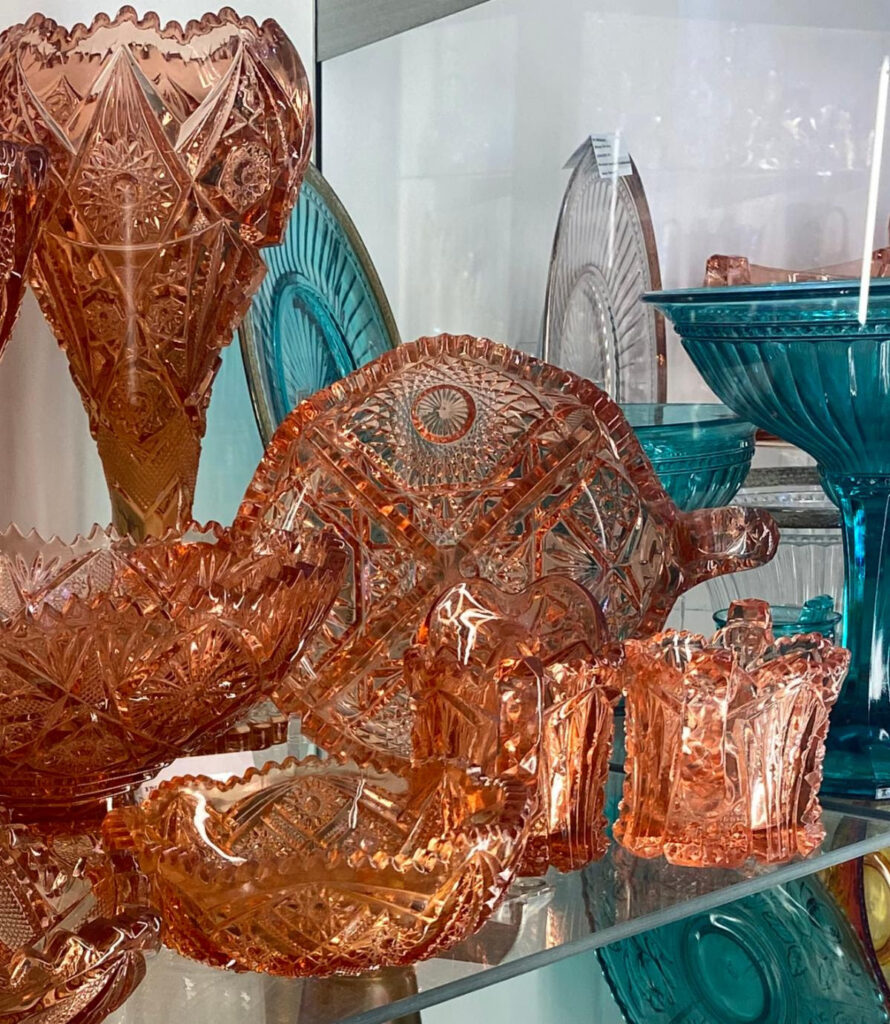
Along the way – just down Belmont St. SONS OF ITALY
Chartered in 1917, Sons of Italy lodge is an active civic organization with a generous spirit. In addition to serving up amazing pasta and famous sausage sandwiches, they are also home to the region’s only bocce ball court.
Also featured at this stop:
- Homemade sausage sandwiches available for purchase in the courtyard
- Learn about bocce from the Belmont County Eagles Special Olympics Bocce Team
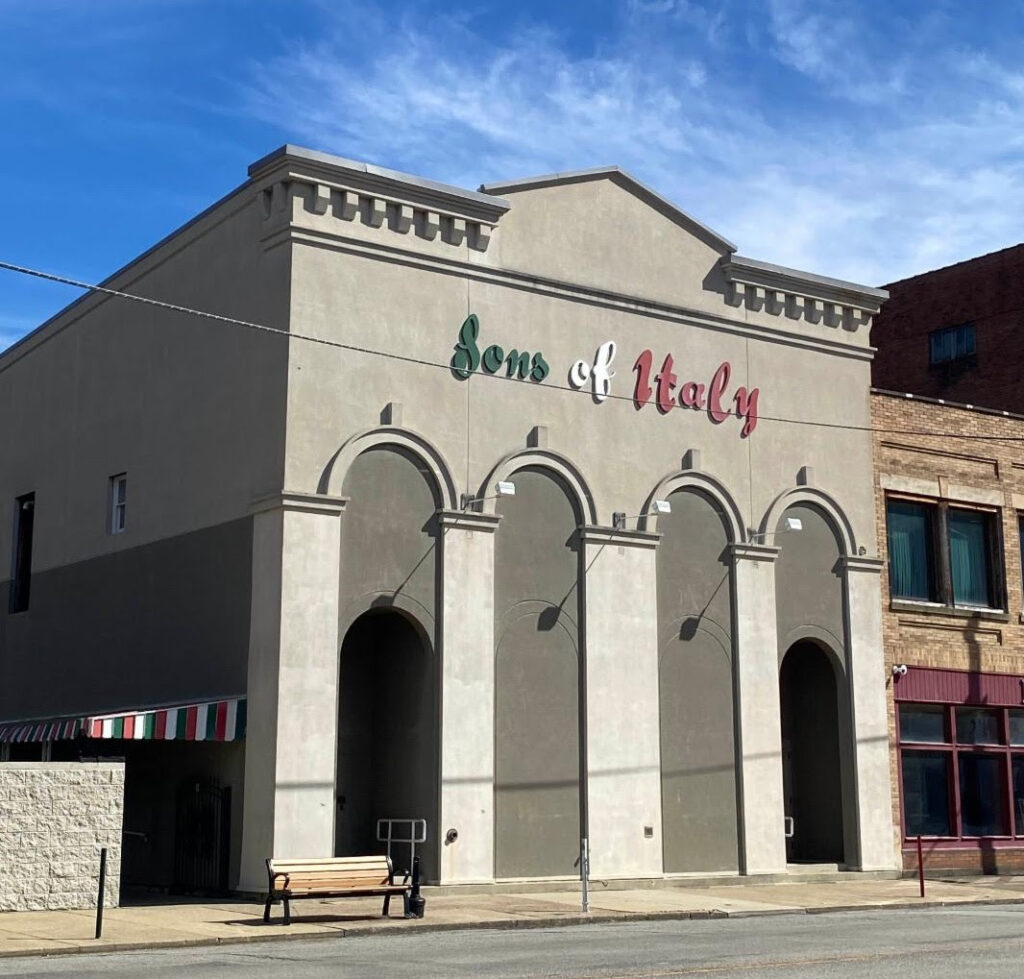
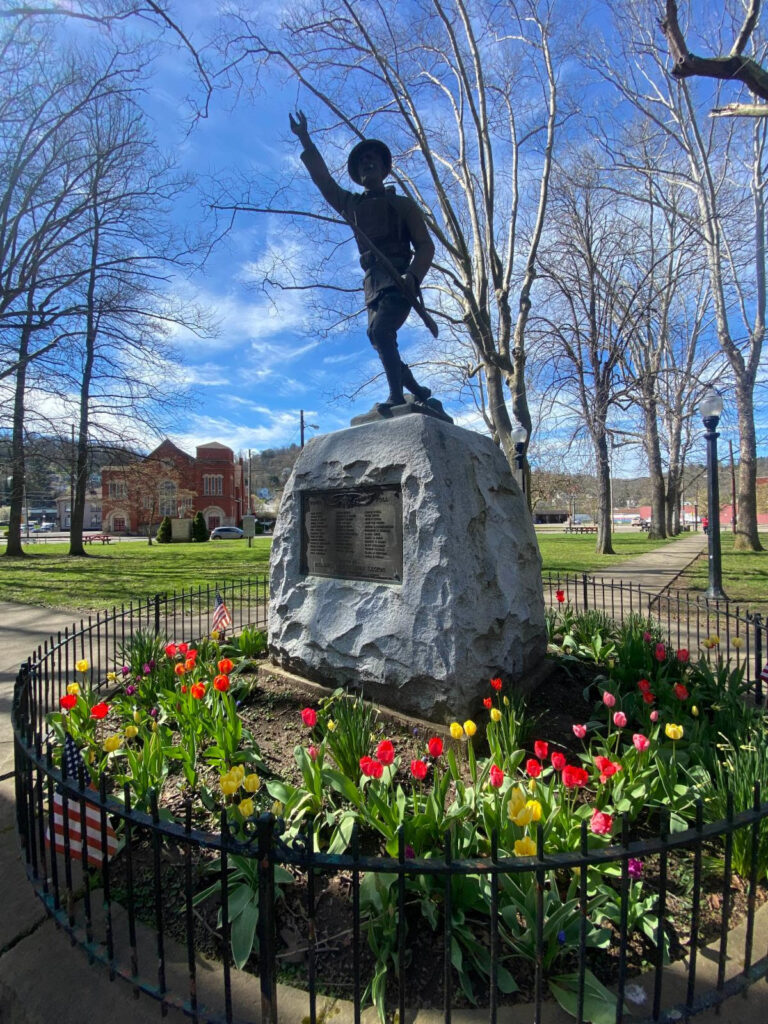
STOP 5 – UNION SQUARE PARK
Union Square Park is filled with history and heritage that shaped the village of Bellaire, and features five historical markers telling its story. The park was used for public gatherings like circuses, political meetings, and playing baseball, and during the Civil War it was used as a canteen for feeding Union recruits from nearby Camp Jefferson.
Also featured at this stop:
- Shop local with Ohio Valley Farmers Market vendors throughout the park
- Experience living history narrated by historical interpreters
- Ideal Provisions food truck & Kirke’s Homemade Ice Cream
STOP 6 – GREAT STONE VIADUCT
For over 150 years, the towering stone arches have greeted visitors to Bellaire. They are a lasting reminder of the area’s importance in transportation, industry, and innovation. With 43 sandstone arches resembling a Roman aqueduct, it was constructed in 1871 to unite the nation after the Civil War, each arch signifying a state of the Union. The Great Stone Viaduct was added to the National Register of Historic Places in 1976.
Also featured at this stop:
- Learn more from the Great Stone Viaduct Historical Education Society
- Enjoy activities with the Bellaire Public Library
- Watch planes soar as the RC Flyers take flight
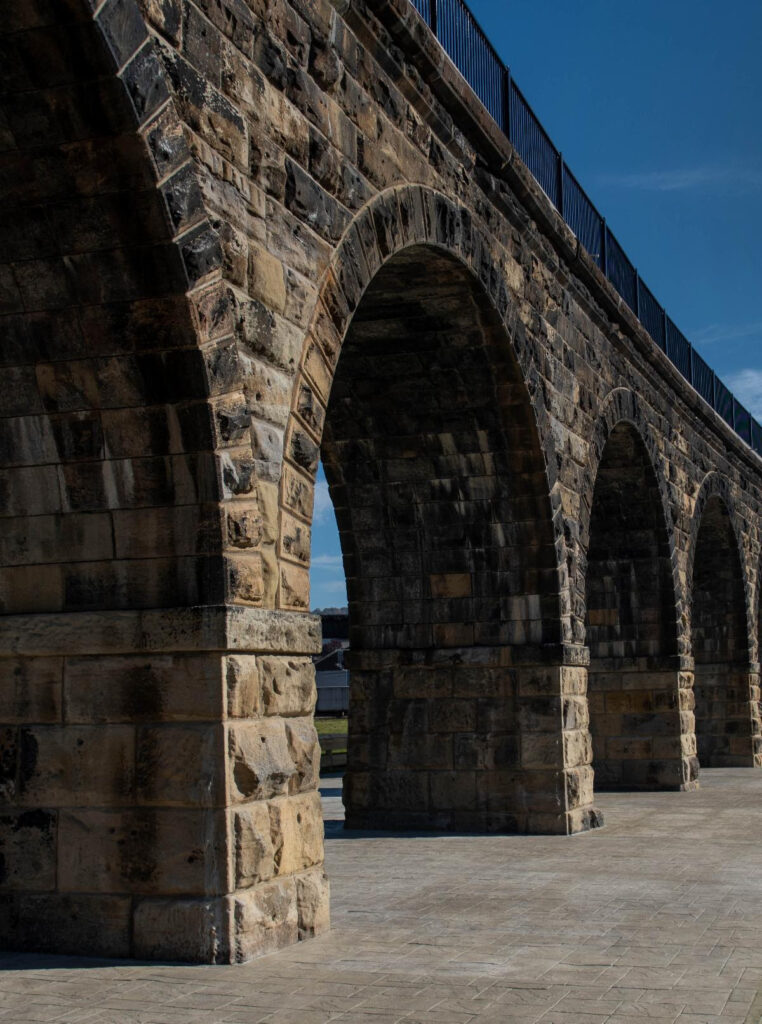
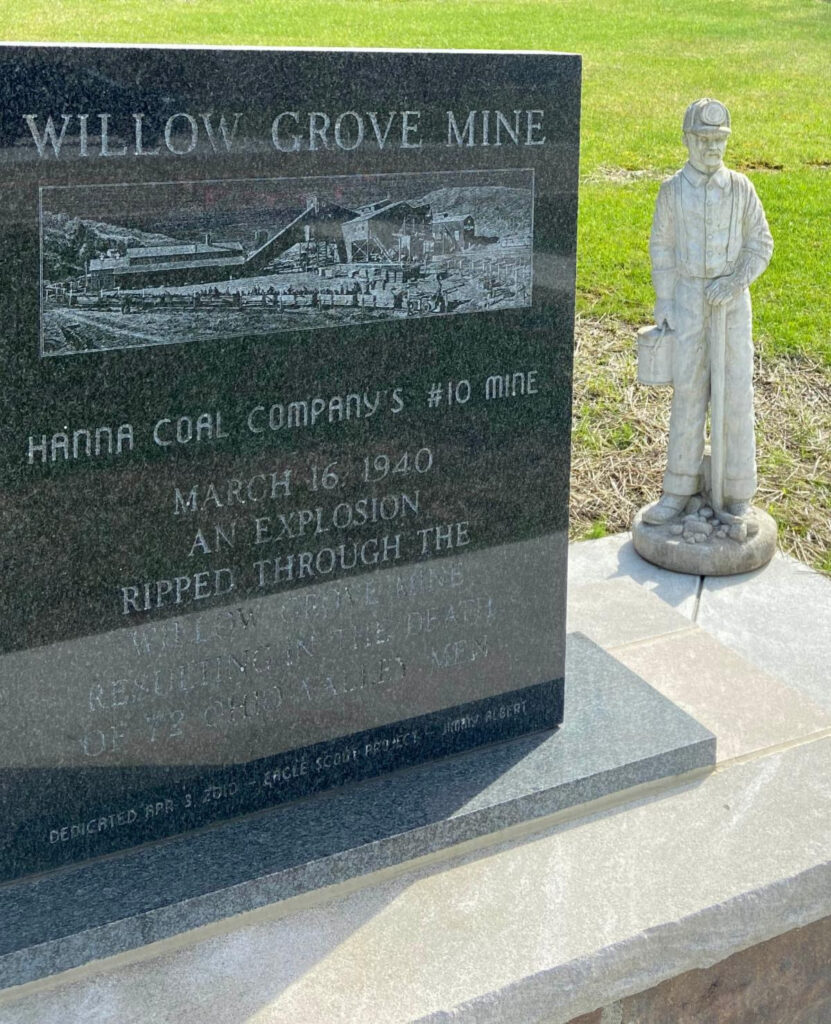
STOP 7 – WILLOW GROVE MINE MEMORIAL
The impact of a mine accident that took the lives of 72 men reverberates through time and is still felt today. Belmont County continues to mourn the loss of those lives 84 years later. What began as a typical day at Hanna Coal Company’s Willow Grove No. 10 Mine, recognized as one of the country’s model mines, ended in tragedy on March 16, 1940.
Also featured at this stop:
- Learn more from the Friends of Willow Grove & United Mine Workers of America
Don’t forget your passport!
Complete your passport by checking in at every stop and receiving a stamp. Turn in your passport at any location for a chance to win one of five Belmont-themed gift baskets!
Download your passport now or pick one up at the Tourism Office. They will also be available at each stop along the route during the event.


